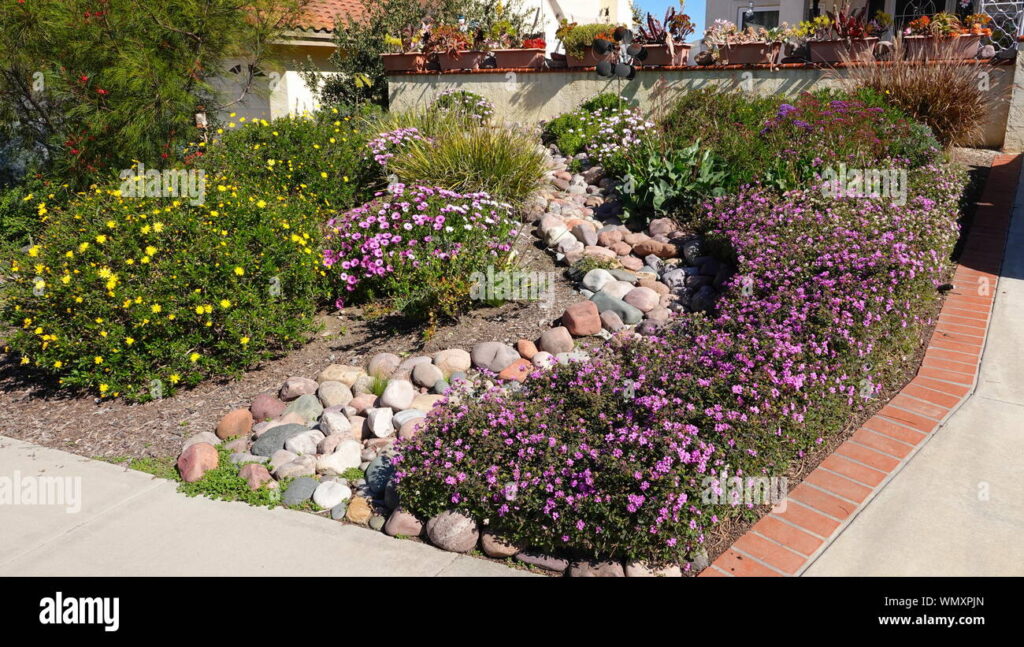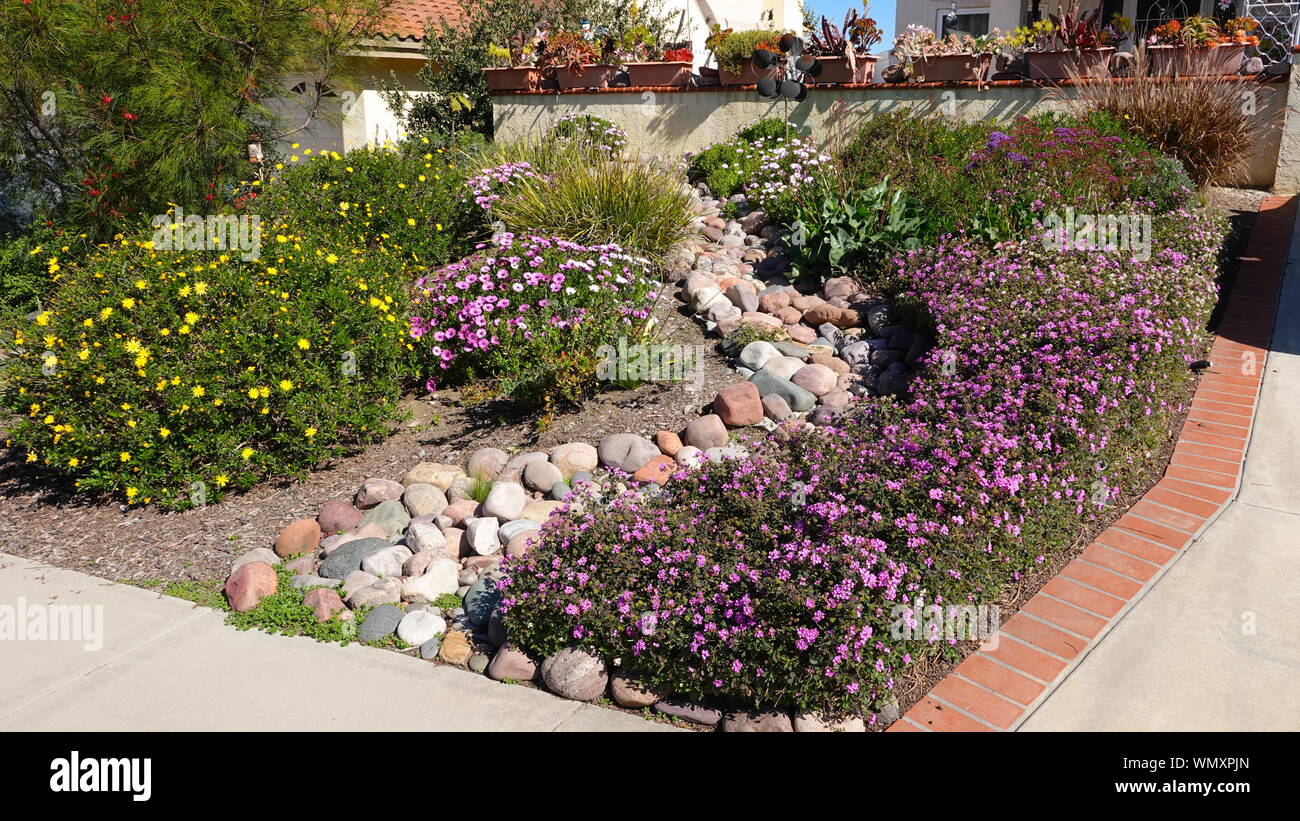
Drought Tolerant Landscaping California: A Guide to Sustainable Gardens
California’s climate, characterized by long, dry summers and mild, wet winters, presents unique challenges and opportunities for gardeners. With increasing concerns about water conservation, drought tolerant landscaping California has become not just a trend, but a necessity. This approach to gardening focuses on selecting plants and implementing designs that require minimal supplemental irrigation, contributing to a more sustainable and environmentally friendly lifestyle. This article explores the principles, benefits, and practical steps involved in creating a beautiful and resilient drought tolerant landscape in California.
Understanding the Need for Drought Tolerant Landscaping
California has faced severe droughts in recent years, highlighting the importance of water conservation. Traditional lawns and water-intensive plants can strain water resources, especially during dry periods. Drought tolerant landscaping reduces water consumption, lowers utility bills, and promotes ecological balance. By choosing native or adapted plants, you can create a garden that thrives in California’s climate without relying heavily on irrigation.
The Environmental Benefits
- Reduced Water Consumption: The most obvious benefit is the significant reduction in water usage.
- Lower Utility Bills: Less water usage translates to lower water bills.
- Improved Soil Health: Drought tolerant landscaping often involves using mulch and compost, which improves soil structure and fertility.
- Habitat Creation: Native plants attract local wildlife, such as birds, butterflies, and beneficial insects.
- Reduced Chemical Use: Drought tolerant plants are generally more resistant to pests and diseases, reducing the need for pesticides and herbicides.
Principles of Drought Tolerant Landscaping
Creating a successful drought tolerant landscape in California involves several key principles:
Planning and Design
Start by assessing your site’s conditions, including sunlight exposure, soil type, and drainage. Create a design that groups plants with similar water needs together, a practice known as hydrozoning. Consider the mature size of plants to avoid overcrowding and ensure they receive adequate sunlight. Proper planning is essential for long-term success.
Soil Preparation
Healthy soil is crucial for drought tolerant plants. Amend the soil with compost and organic matter to improve its water-holding capacity and drainage. Consider using raised beds or berms to improve drainage in areas with heavy clay soil. Mulching around plants helps retain moisture, suppress weeds, and regulate soil temperature. [See also: Soil Amendments for Drought-Resistant Gardens]
Plant Selection
Choose plants that are native to California or well-adapted to its climate. Native plants are naturally drought tolerant and require minimal maintenance. Some excellent choices include California poppies, ceanothus, manzanita, and various types of succulents. Consider the color, texture, and bloom time of different plants to create a visually appealing landscape. Consult with local nurseries and gardening experts for recommendations specific to your region.
Efficient Irrigation
While drought tolerant landscaping aims to reduce water usage, some supplemental irrigation may still be necessary, especially during the establishment phase. Use efficient irrigation methods such as drip irrigation and soaker hoses to deliver water directly to plant roots. Avoid overhead sprinklers, which can waste water through evaporation. Water deeply and infrequently to encourage deep root growth. Install a smart irrigation controller that adjusts watering schedules based on weather conditions.
Mulching
Mulch is an essential component of drought tolerant landscaping. It helps retain soil moisture, suppress weeds, regulate soil temperature, and prevent erosion. Use organic mulches such as wood chips, bark, or straw. Apply a layer of mulch 2-4 inches thick around plants, being careful not to pile it against the stems. Replenish the mulch as needed to maintain its effectiveness.
Plant Choices for Drought Tolerant Landscaping in California
Selecting the right plants is paramount for a successful drought tolerant landscape. Here are some popular and effective choices:
California Native Plants
- California Poppy (Eschscholzia californica): A vibrant annual that thrives in full sun and well-drained soil.
- Ceanothus (California Lilac): A shrub with beautiful blue or purple flowers that attracts pollinators.
- Manzanita (Arctostaphylos): An evergreen shrub with attractive bark and delicate flowers.
- California Buckwheat (Eriogonum fasciculatum): A versatile shrub that provides food and habitat for wildlife.
- Coast Live Oak (Quercus agrifolia): A majestic tree that provides shade and supports a diverse ecosystem.
Succulents and Drought Tolerant Ornamentals
- Agave: A striking succulent with architectural foliage.
- Sedum: A low-growing succulent with colorful foliage and flowers.
- Lavender (Lavandula): A fragrant herb with beautiful purple flowers.
- Rosemary (Rosmarinus officinalis): A versatile herb with aromatic foliage and blue flowers.
- Yarrow (Achillea millefolium): A perennial with fern-like foliage and clusters of small flowers.
Practical Steps to Create Your Drought Tolerant Landscape
Transforming your existing landscape into a drought tolerant oasis involves several key steps:
Assess Your Current Landscape
Evaluate your existing plants and determine which ones are water-intensive and which ones are already drought tolerant. Consider removing lawns and replacing them with drought tolerant groundcovers or permeable paving. Identify areas where you can reduce water usage and improve efficiency.
Design Your New Landscape
Create a detailed design that incorporates the principles of drought tolerant landscaping. Group plants with similar water needs together and choose plants that are appropriate for your site’s conditions. Consider the overall aesthetic of your landscape and select plants that complement each other in terms of color, texture, and form. [See also: Landscape Design Principles for Water Conservation]
Prepare the Soil
Amend the soil with compost and organic matter to improve its water-holding capacity and drainage. Remove any weeds or debris from the planting area. Consider using raised beds or berms to improve drainage in areas with heavy clay soil.
Install Irrigation Systems
Install a drip irrigation system or soaker hoses to deliver water directly to plant roots. Use a smart irrigation controller to adjust watering schedules based on weather conditions. Test the irrigation system to ensure it is working properly before planting.
Plant Your Drought Tolerant Plants
Plant your chosen drought tolerant plants according to their specific requirements. Dig holes that are twice as wide as the root ball and the same depth. Gently loosen the roots before planting. Water the plants thoroughly after planting and apply a layer of mulch around the base.
Maintain Your Landscape
Regular maintenance is essential for a healthy and thriving drought tolerant landscape. Water plants as needed, especially during the establishment phase. Weed regularly to prevent competition for water and nutrients. Prune plants to maintain their shape and encourage new growth. Replenish the mulch as needed to maintain its effectiveness. Monitor plants for pests and diseases and take appropriate action if necessary.
Overcoming Challenges in Drought Tolerant Landscaping
While drought tolerant landscaping offers many benefits, it can also present some challenges:
Initial Costs
The initial cost of installing a drought tolerant landscape can be higher than that of a traditional landscape, especially if you need to remove existing lawns and install new irrigation systems. However, the long-term savings in water bills and maintenance costs can offset the initial investment.
Plant Availability
Some drought tolerant plants may be difficult to find, especially if you are looking for specific native species. Consult with local nurseries and gardening experts for recommendations and sources.
Maintenance
While drought tolerant landscapes require less water than traditional landscapes, they still need regular maintenance. Weeding, pruning, and mulching are essential for maintaining the health and appearance of your landscape.
The Future of Drought Tolerant Landscaping in California
As California continues to face water scarcity challenges, drought tolerant landscaping will become increasingly important. Innovations in plant breeding, irrigation technology, and landscape design are making it easier and more affordable to create beautiful and sustainable gardens. By embracing drought tolerant landscaping, Californians can conserve water, protect the environment, and create resilient landscapes that thrive in the face of climate change.
Drought tolerant landscaping California is not just a trend; it’s a responsible and sustainable approach to gardening that benefits both homeowners and the environment. By understanding the principles, selecting the right plants, and implementing efficient irrigation practices, you can create a beautiful and resilient landscape that thrives in California’s unique climate. Embrace the challenge and transform your garden into a drought tolerant oasis that conserves water and enhances the beauty of your property.

